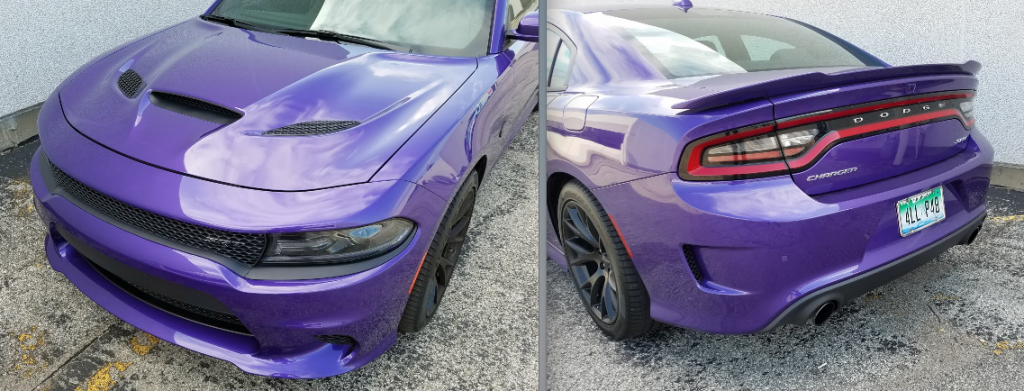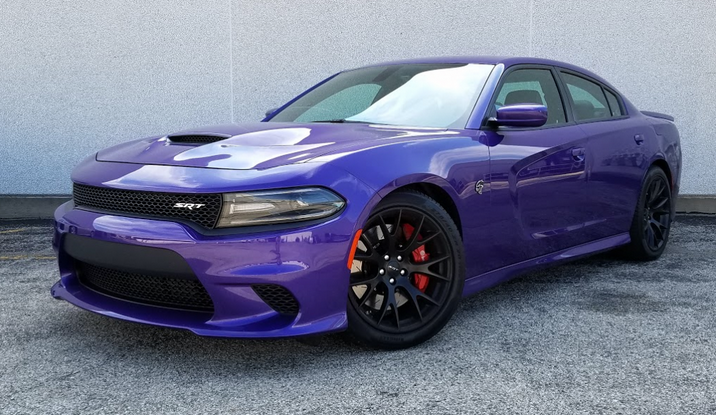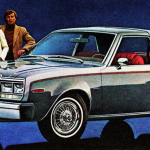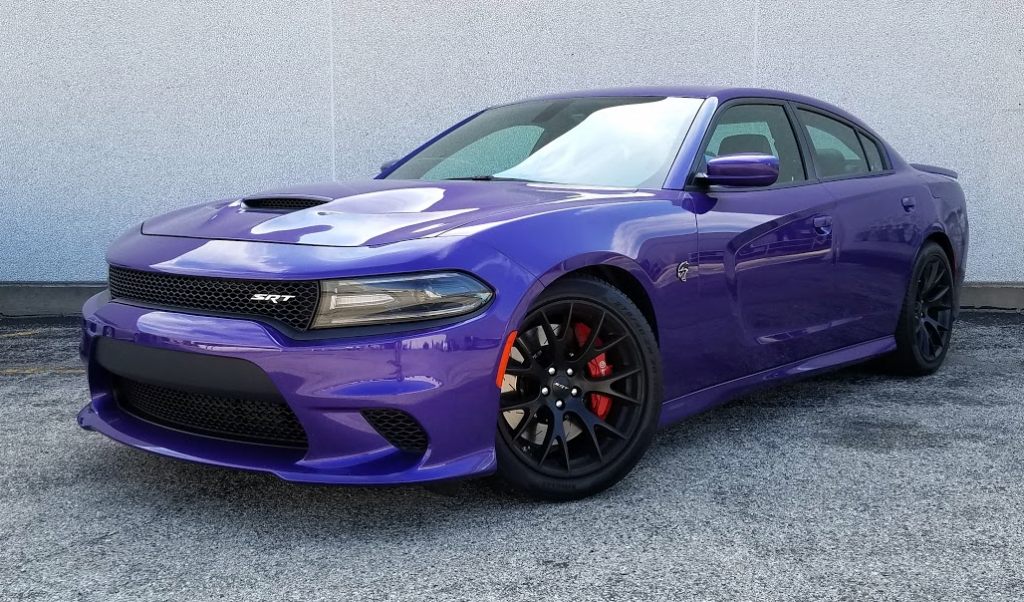
2016 Dodge Charger SRT Hellcat 
Class: Premium Sporty/Performance
Miles Driven: 301
Fuel Used: 24.9 gallons
Real-world fuel economy: 12.1 mpg
| CG Report Card | |
|---|---|
| Room and Comfort | B |
| Power and Performance | A+ |
| Fit and Finish | B |
| Fuel Economy | D- |
| Value | C |
| Report-card grades are derived from a consensus of test-driver evaluations. All grades are versus other vehicles in the same class. Value grade is for specific trim level evaluated, and may not reflect Consumer Guide's impressions of the entire model lineup. | |
| Big & Tall Comfort | |
| Big Guy | B |
| Tall Guy | A- |
| Big & Tall comfort ratings are for front seats only. "Big" rating based on male tester weighing approximately 350 pounds, "Tall" rating based on 6'6"-tall male tester. | |
Driving mix: 75% city, 25% highway
EPA-estimated fuel economy: 13/22/16 (city, highway, combined)
Base price: $65,945 (not including $995 destination charge)
Options on test car: Harmon Kardon Audio Group ($1995), summer tires ($595), Gas Guzzler Tax ($1700)
Price as tested: $71,230
Quick Hits
The great: Thrilling acceleration
The good: Sporty handling, given the Charger’s size and heft
The not so good: Poor fuel economy
Check out Consumer Guide’s Premium Sporty/Performance Best Buys
John Biel
The name alone sounds nasty: Hellcat. The cars that it’s on certainly are.
There are two ways to get the 707-horsepower Hellcat treatment on a Dodge—as a two-door Challenger or a four-door Charger like the one that Consumer Guide® editors drove. Many four-door cars, especially in the large-car class in which the Charger resides, are fairly tame family conveyances. All that this sedan and sedate have in common are four letters.
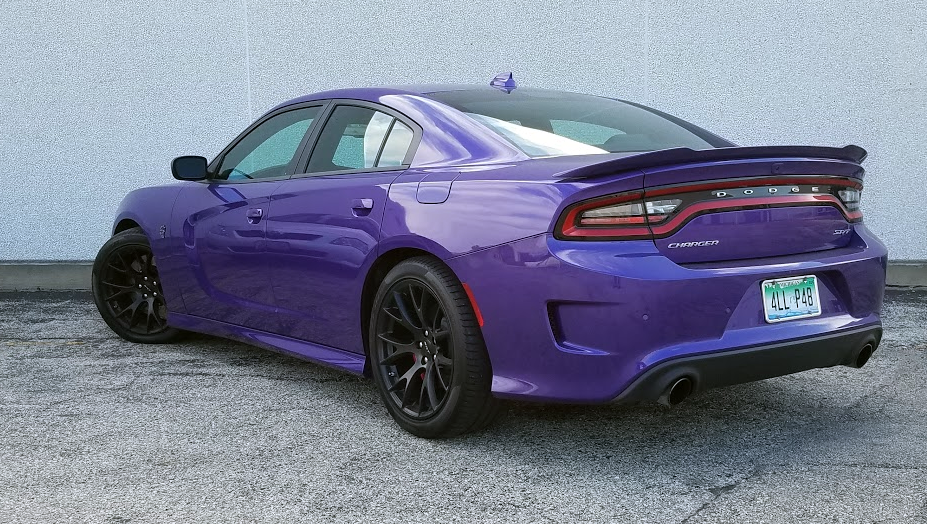
Yes, the Hellcat is hairy, but it isn’t new. It made its debut in 2015, when the then-nine-year-old Charger came in for a substantial facelift, a redone interior, and enhanced tech features. Naturally, a street-legal sedan with racecar power figures and a projected top speed just beyond 200 mph—especially one based on a prosaic mass-production platform, not a purpose-built “super car”—is going to attract gobs of attention. As a publicity stunt, the Charger (and Challenger) Hellcat was a screaming success, drawing prodigious amounts of ink, air, and bytes from reviewers who drove it last year.
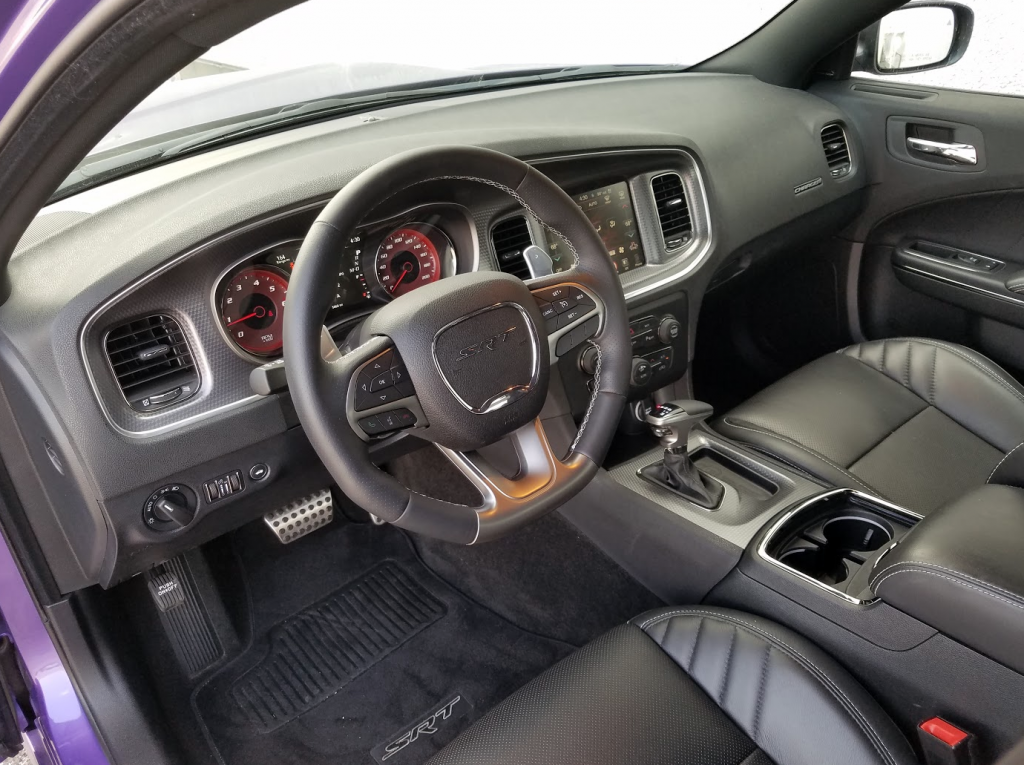
It’s hard to top that in year two, especially when specification changes to the Hellcat are few—newly standard are Laguna leather interior appointments and a navigation system. CG’s test car was sprayed in Plum Crazy paint, a new limited-production color for the ’Cat plucked from the showy “High Impact” palette from Dodge’s glorious muscle-car past, circa 1970. However, this nostalgic deep purple was only available for the first few months of the 2016 model year.
Still, even if you’ve driven a Hellcat before, it’s hard to be blasé when depressing the starter button and summoning all those wild horses that will drag you away in a hurry from whatever you were doing before. The Hellcat’s exclusive 6.2-liter supercharged Hemi V8 wakes up in a roaring bad mood, continues grumbling the whole time that you drive it, and whines through the twin-screw supercharger when you need it to get a move on. That sounds miserable, right? On paper (or whatever this is), true; on pavement it’s a siren’s song.
With 650 lb-ft of torque peaking at 4000 rpm, the Charger Hellcat has provided enthusiast-magazine test times of less than four seconds in the 0-60-mph sprint and sub-12-second quarter miles. With nearly three-quarters of this driver’s 178.7 test miles consumed in mucking through sluggish morning and early evening urban commuter traffic, there wasn’t much opportunity to replicate that kind of performance. However, it takes just a moment to realize that in a Hellcat you’ll never have to worry about executing a highway pass or making open-road miles disappear in a hurry. Selectable “Sport” and “Track” performance settings let the 8-speed automatic transmission stay in gear a little longer before booting you up through the gears, and launch control helps to spare the rear tires somewhat during more, um, volcanic starts.
Future Collectibles: 2015 Dodge Challenger SRT Hellcat
Unfortunately, the fun’s over the moment you pull up to the pump. The Charger Hellcat’s EPA fuel-economy ratings are just 13 mpg in city driving, 22 mpg on the highway, and 16 combined. Ah, if only: This tester averaged a mere 11.5 mpg during his stint. Oh, and those are premium-fuel gallons.
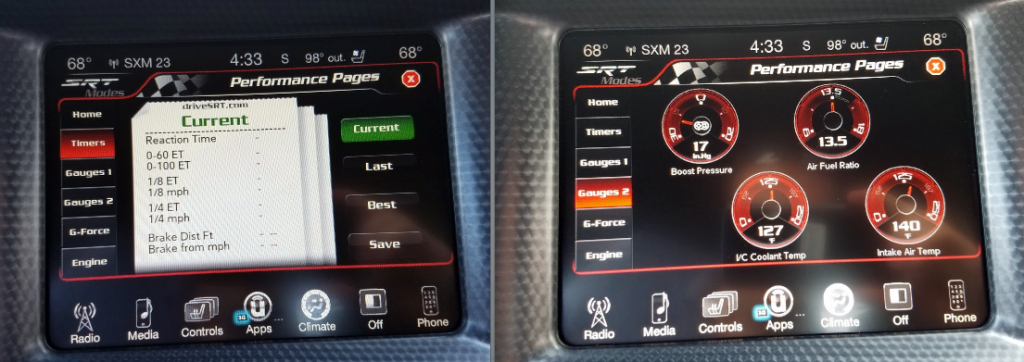
Handling and braking are, respectively, very good and excellent—all the more so for a car of this heft. As for downright nimble, well, let’s not get carried away here. . . . Ride is better than imagined from a very-high-performance car, with decent bump absorption in the base “Default” mode. (The aforementioned performance settings also alter steering and suspension functions.)
Here’s what else you can expect from the big-boss Charger:
- The interior provides pretty good room for legs and elbows, with decent headroom all around—though it takes a little ducking under the roofline to enter the back seat. With a tall, wide driveline tunnel, effective passenger capacity is four persons.
- The top version of Chrysler’s Uconnect infotainment system with an 8.4-inch screen is standard in the Hellcat. It’s easy to set and select audio presets, climate settings, and vehicle-performance settings through the screen. This is also where drivers can find the standard “Performance Pages” displays for things like speed and braking timers, g-force meters, and more. Dials for the tachometer and speedometer glow with a reddish cast when the car is started.
- What looks like grained hard plastic on the upper portions of the dashboard and doors have a bit of give. Smoother, softer surfaces adorn the armrests, door centers, and console-box lid.
- Interior storage up front includes an ample bi-level glove box, a covered cubby under the armrest (with a power point and media-device ports inside), covered cup holders in the console, and large door pockets with bottle holders in the front doors. In back there are smaller door pockets (still with bottle holders), and pouches on the backs of the front seats. However, unlike other Chargers, there is no center armrest in back.
- The trunk is fairly large and flat-floored, though it narrows between the wheelhouses. The 60/40-split rear seats fold nearly—but not completely—flat for added carrying capacity. With an inflator but no spare tire, there is room for a storage bin under the trunk floor. Covered gooseneck decklid hinges protect cargo.
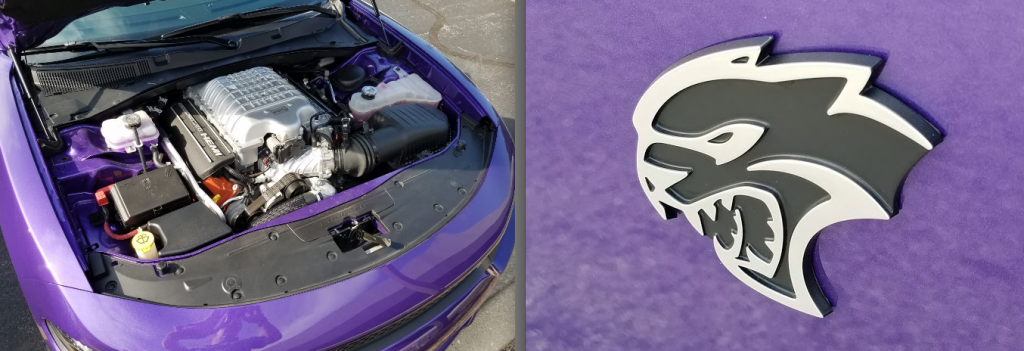
At $65,945 to start—and $71,230 delivered, as CG’s test car was priced—the Hellcat is either the deal of the century (compared to certain exotic import-brand sedans) or an outrageous extravagance (compared to even other Chargers). Notable standard equipment includes an antislip axle, meaty Brembo 6-piston disc brakes, rear parking assist, blind-spot and rear cross-traffic detection, heated and ventilated front seats, heated rear seats, heated steering wheel, automatic dual-zone climate control, Bluetooth connectivity, satellite radio and travel/traffic services, 9-speaker audio, and Pirelli all-season performance tires on 20-inch alloy wheels. Gas-guzzler tax—$1700 of it—is an unavoidable expense, and the test car was augmented with racier “summer” tires, and an option package with a Harmon Kardon audio upgrade and floor mats. However, the nasty is just built in.
Future Collectibles: 2014-16 Chevrolet SS
Tom Appel
The Hellcat’s days are numbered. FCA’s future product plans don’t include a Hemi V8 for passenger cars, which makes sense. Cars with a 16-mpg EPA combined rating won’t help the company meet future fleet-fuel-economy targets.
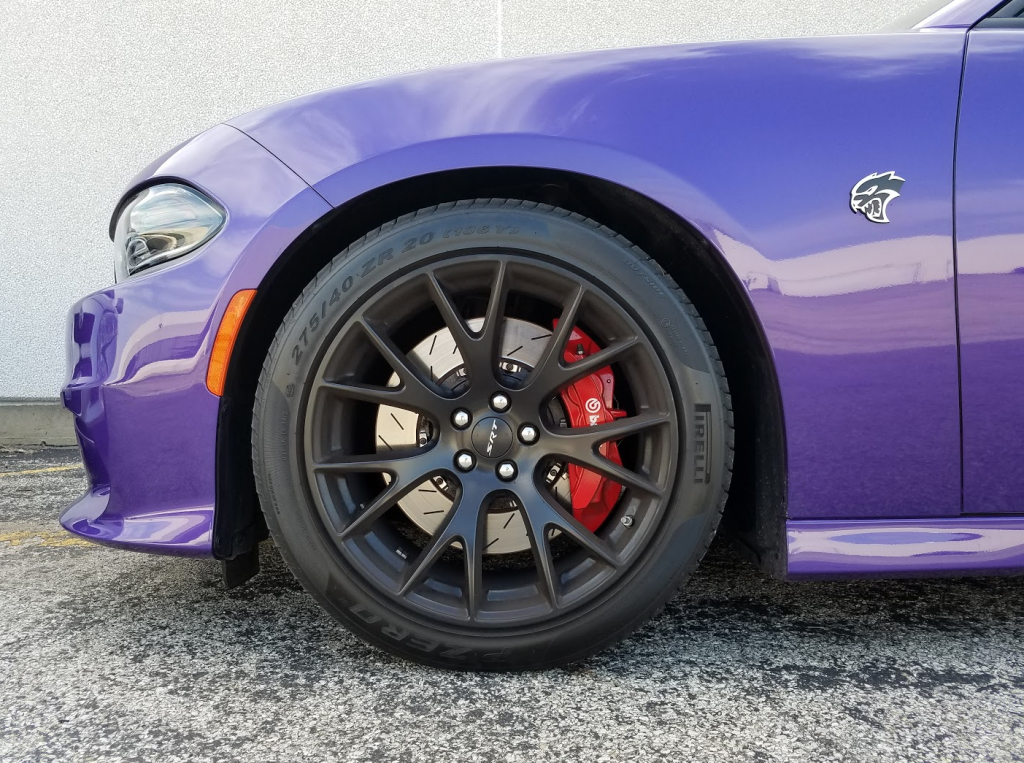
But that’s okay, because driving a Hellcat Challenger or Charger is an exercise in living in the present. To fully enjoy this car, buckle in and drive off. Don’t turn on the radio, because any sound coming through the speakers is likely to muffler the otherworldly whine of the Hellcat supercharger. Don’t roll up the windows, because the exhaust note is worth the $71,000 price of Hellcat admission alone. Instead, just live in the moment.
Hit the gas hard when you can, tolerate lesser traffic as you must, and find time to exploit an onramp when traffic is light. Amazingly, the Charger SRT Hellcat is as docile to drive as any V6 Charger; it even rides about as well.
You could commute in a Hellcat every day, but that would be overkill—a little like living at a Four Seasons or working at a combination bakery/brewery that pays its employees with free samples.
It’s easy to question why any company would sink money into a vehicle this over the top, but on some level, it’s comforting to know that a car like this is still being built—for now. Long live the Hellcat.
Future Collectibles: 2015-16 Dodge Charger SRT Hellcat
